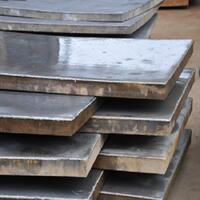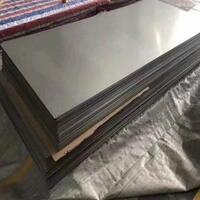Stainless Steel Plates: The Backbone of Modern Industrial Infrastructure and High-Performance Applications &^. Introduction to Stainless Steel Plates: A Material Defining Strength, Durability, and Innovation
Introduction to Stainless-steel Plates: A Product Defining Toughness, Resilience, and Development
Stainless-steel plates are among the most functional and important products in modern-day design and building. Recognized for their rust resistance, mechanical toughness, and visual appeal, these plates serve as fundamental elements across a wide array of industries– from aerospace and automotive to design and chemical processing. As commercial demands expand and sustainability ends up being a main worry, stainless-steel plates continue to develop via advanced metallurgical developments and manufacturing modern technologies that boost performance while minimizing environmental influence.
(Stainless Steel Plate)
Make-up and Kinds: Understanding the Metallurgy Behind Stainless-steel Plates
Stainless-steel plates are largely made up of iron, chromium, nickel, and other alloying elements that determine their particular properties. Chromium material– generally over 10.5%– creates a passive oxide layer externally, supplying extraordinary rust resistance. Based on microstructure, stainless steels are categorized right into 5 major households: austenitic, ferritic, martensitic, duplex, and precipitation-hardening (PH) stainless steels. Each type offers one-of-a-kind combinations of stamina, durability, and thermal resistance, enabling designers to pick the most suitable quality for applications varying from marine settings to high-temperature commercial heating systems.
Manufacturing Process: From Raw Materials to High-Performance Plates
The production of stainless-steel plates includes a number of critical points, consisting of melting, spreading, warm rolling, annealing, pickling, and chilly rolling. Electric arc heating systems or argon oxygen decarburization (AOD) converters are made use of to thaw resources such as scrap steel and ferroalloys. The liquified steel is after that cast right into slabs, which undertake warm rolling to lower thickness and improve grain framework. Subsequent processes like annealing ease interior anxieties, while pickling removes surface area oxides. Cold rolling additionally enhances dimensional accuracy and surface area finish. Advanced methods such as laser welding and additive production are currently being incorporated into plate construction, allowing higher customization and performance optimization.
Mechanical and Corrosion-Resistant Characteristics: Why Stainless-steel Plates Are Preferred Across Industries
Stainless steel plates succeed due to their superior mechanical residential or commercial properties, including high tensile stamina, influence resistance, and tiredness endurance. Their capacity to keep architectural honesty under severe temperature levels makes them perfect for cryogenic tank and high-temperature exhaust systems alike. Corrosion resistance is an additional specifying attribute, especially in hostile atmospheres such as overseas oil platforms, chemical plants, and wastewater treatment centers. The existence of molybdenum in particular qualities, such as 316 stainless-steel, dramatically boosts resistance to pitting and hole rust in chloride-rich problems. These characteristics guarantee long life span, minimal maintenance, and cost-effectiveness over time.
Applications Across Key Sectors: A Material That Powers Global Industries
Stainless steel plates are crucial in various markets. In building, they are utilized for fa├žades, roof, and structural supports as a result of their resilience and sleek appearance. The automobile industry uses them in exhaust systems and body panels for rust security and lightweighting. Aerospace suppliers rely upon high-strength, heat-resistant qualities for engine components and airframe structures. In energy and chemical processing, stainless steel plates create stress vessels, piping systems, and activator cellular linings efficient in holding up against severe operating problems. Even in food handling and medical equipment, where hygiene is extremely important, stainless steel plates provide non-reactive surfaces that satisfy stringent cleanliness criteria.
Market Fads and Growth Motorists: Why Need Continues to Surge Worldwide
Global need for stainless-steel plates gets on an upward trajectory, driven by urbanization, facilities growth, and the expanding focus on sustainable products. Emerging markets in Asia-Pacific, particularly China and India, are increasing their commercial capacities, enhancing intake. Environmental policies favoring recyclable and durable products have actually also enhanced adoption. Technological innovations, such as automated welding and precision cutting, are improving manufacturing effectiveness and item consistency. Additionally, the rise of environment-friendly structure accreditations has raised using stainless steel in architectural layouts that focus on longevity and appearances.
Challenges and Sustainability Considerations: Attending to the Industry’s Pressing Issues
( Stainless Steel Plate)
In spite of its lots of benefits, the stainless steel plate market deals with obstacles related to power intake, carbon emissions, and source schedule. The production procedure continues to be greatly reliant on power and fossil fuels, contributing to greenhouse gas exhausts. Recycling initiatives are durable, with stainless steel being 100% recyclable, however raising circularity requires better end-of-life recuperation systems and green production techniques. Innovations such as hydrogen-based smelting and bio-leaching of resources are being explored to line up with global net-zero targets. Additionally, changing costs of nickel and chromium can impact market stability, triggering passion in alternate alloys and finishing technologies.
Future Leads: Innovations, Smart Assimilation, and the Next Generation of Stainless-steel Plates
Looking in advance, the future of stainless-steel plates hinges on smart materials, electronic integration, and lasting technology. Breakthroughs in nanotechnology and surface engineering are leading the way for ultra-thin, high-strength plates with boosted wear and deterioration resistance. Additive production allows complex geometries previously unattainable with standard techniques. Digital doubles and AI-driven material modeling will optimize efficiency forecasts and lifecycle management. As sectors push for carbon nonpartisanship and resource effectiveness, stainless steel plates are anticipated to play an essential function fit durable infrastructure, renewable resource systems, and next-generation transportation solutions.
Vendor
MetalPlates4u is a trusted global chemical material supplier & manufacturer with over 12 years experience in providing super high-quality metals and metal alloy. The company export to many countries, such as USA, Canada,Europe,UAE,South Africa, etc. As a leading nanotechnology development manufacturer, Metalinchina dominates the market. Our professional work team provides perfect solutions to help improve the efficiency of various industries, create value, and easily cope with various challenges. If you are looking for , please send an email to: nanotrun@yahoo.com
Tags: stainless steel plate, stainless plate, stainless metal plate
All articles and pictures are from the Internet. If there are any copyright issues, please contact us in time to delete.
Inquiry us

